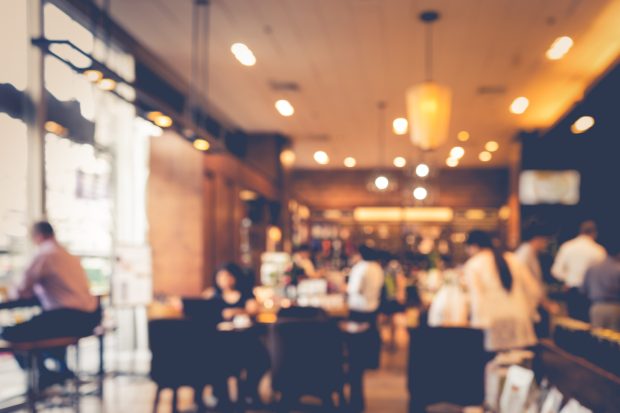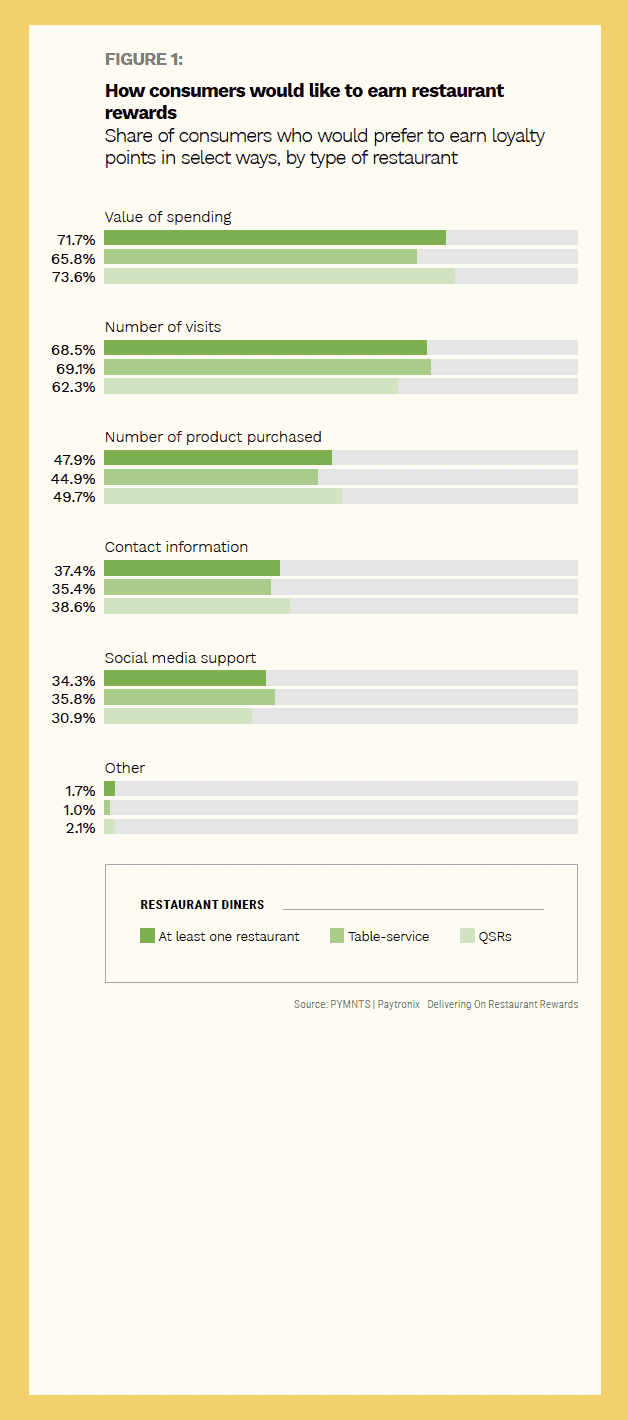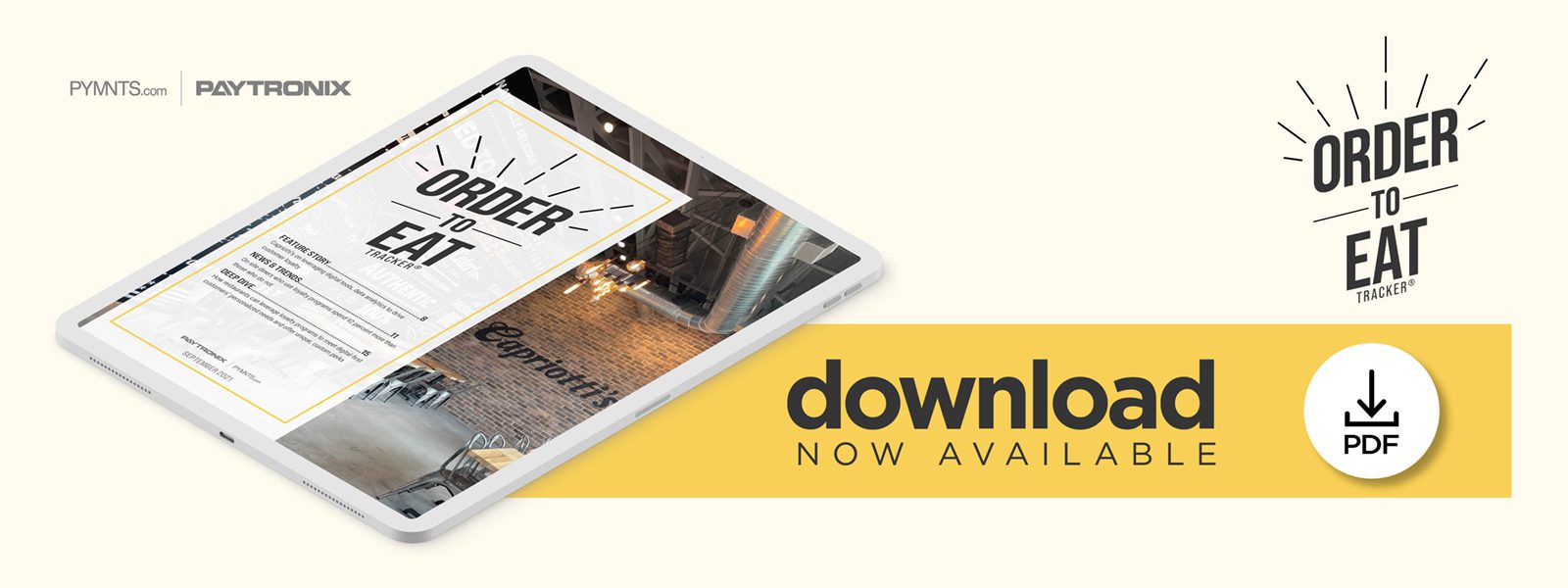Deep Dive: How Restaurant Loyalty Programs Can Engage Customers and Grow Sales

Loyalty programs, long a mainstay of the restaurant industry, made major inroads as the pandemic’s economic consequences spurred consumers to be more careful about their spending habits.
Market research indicated that 47% of U.S. consumers have used some sort of loyalty program — up significantly from pre-pandemic days, when less than 24% knew about such offerings. A survey of quick-service restaurants (QSRs) customers found that 42% reported using at least one QSR loyalty program in April compared to 36% in October 2020.
The restaurant industry still faces uncertain times, and both table-service operators and QSRs continue to rely on loyalty programs to grow brand awareness and reward customers for continued patronage. The rewards work both ways: Restaurant operators that offer such programs have higher sales and more satisfied customers than brands without them. A PYMNTS study found that more than 57% of users would spend more with a loyalty program, and other data showed that increasing loyalty by 5% could boost a restaurant’s profits by 25% to 95%.
Consumers’ expectations of digital interactions have evolved over the course of the pandemic, however. There is a growing desire for personalization, with customers seeking not only rewards based on what they spend, but also personalized experiences that deliver custom content on products relevant to their purchasing histories. In this way, loyalty programs have become valuable tools for attracting and retaining customers while also allowing restaurants to collect data to fuel deeper consumer engagement. Exclusive brands’ loyalty programs are working to foster a sense of belonging and community among their members, for example, and customers are expecting rewards that cater to their specific needs.
The following Deep Dive examines the rapid growth of loyalty programs and their potential to improve customer engagement and drive sales and brand visibility. It also delves into what consumers expect when they join a rewards program and what QSR and table-service restaurant operators can do to enhance and grow their customer loyalty offerings.
Mobile Apps Drive Interest in Loyalty Rewards
Increased interest in loyalty programs among restaurant diners owes itself, in large part, to the popularity of mobile devices and the availability of branded apps, which allow quick and easy ordering for pickup or delivery as well as access to reward points.
A PYMNTS study of loyalty program users found that money-saving rewards remain the top priority among pandemic-era diners. Free food and discounts — at 78% and 66% respectively — were the most common rewards diners wanted to receive from loyalty programs. These perks were popular especially among QSR customers, with 81% wanting to earn free food and 72% wanting to earn discounts.
The survey also found that loyalty program users were most likely to engage with restaurants’ loyalty programs in the same way they place their food orders: via smartphone. Mobile check-ins topped the list of ways loyalty program users wanted to interact with restaurants, at 54%. Fifty-three percent of users wanted to receive rewards via mobile app, and 50% wanted to receive them via text message.
QSR customers were especially interested in using restaurants’ mobile apps to receive rewards, at 58%. Twenty-eight percent said they would like to interact with loyalty programs by receiving rewards via digital wallet, and 13% preferred receipt via third-party provider apps.
What Consumers Expect From Restaurant Loyalty Programs

The pandemic continues to transform consumers’ expectations of the restaurant brands they frequent. Today’s loyalty programs deliver not only personalized content such as favorite orders and recognition of customer birthdays but also meal or drink recommendations and special offers based on customers’ past purchases.
The engine behind these marketing decisions is zero-party data, which enables brands to engage with consumers in mobile apps and online while also protecting customer privacy. Zero-party data consists of information that customers proactively share with brands to offer insights into their personal preferences and purchase intentions. Connecting personalized content to diners’ ordering preferences can make customers feel valued and more likely to return.
PYMNTS research confirmed that restaurants add value to their customers’ dining experiences with personalized or exclusive offerings. Fifty-seven percent of table-service diners reported wanting to receive customized coupons or discounts, as did 72% of QSR loyalty program users. One perk that is particularly popular with diners is the ability to dine in restaurants at peak times. This reward appealed to 38% of table-service restaurant and 32% of QSR loyalty program users. Meanwhile, 32% of all loyalty program members said they would like to see customized menus when ordering, while 27% wanted to receive order suggestions.
PYMNTS research also revealed that the majority of restaurant customers would like to earn rewards by accumulating them for every dollar spent, with 72% of all respondents looking to earn points in this manner. Sixty-nine percent of diners wanted to earn points per visit, and 48% preferred to earn them per product purchased. Customers also want cashless ways to support their favorite restaurants and earn points. Of special interest to respondents were earning points for providing contact information at 37% and posting positive reviews and dining experiences on social media at 34%.
The goal of loyalty programs is to build long-term relationships and cultivate ongoing engagement with frequent diners, giving them good reasons to return. Success begins with identifying loyalty reward offerings and strategies that attract and retain restaurant customers, using data and analytics to gain insights into customer preferences and expectations. Brands that invest in these programs and tailor them to their customers’ needs can expect to grow and stand out from the crowd.
